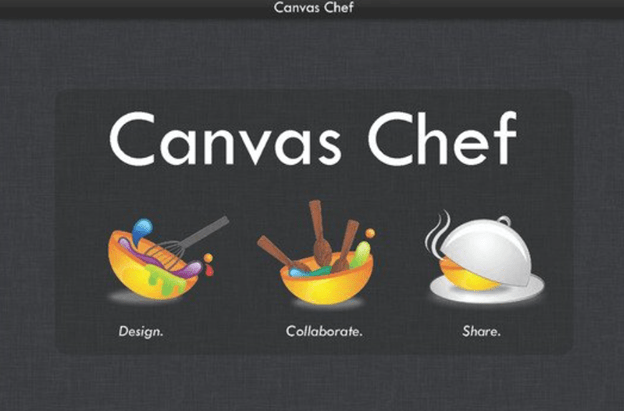Would you use a product backed by both Owen Wilson and Woody Harrelson?
How would you answer that if I told you that the company was a graphic design company?
This startup story starts in Australia, in 2006, with 19-year-old Melanie, a college student, and graphic design tutor. Melanie was frustrated with how complex the software was to use and how expensive it was to purchase. Her students struggled to understand the basic concepts of software that cost $1,000. The barrier to entry was just too high. Adobe Photoshop was overloaded with features that most people never used. Melanie dreamed of a simple software that would make graphic design easier.
She and her boyfriend, Cliff Obrecht, obtained a small loan and invested what they had at the time to start building the software they had in mind. To prove that the concept could work, they started with what they knew: yearbooks. They launched Fusion Books in 2007. The company allowed students to design their own school yearbooks using a simple drag-and-drop tool. It also included a library of design templates that could be customized with photos, illustrations, and fonts to make it unique to every user.
They knew they had a product people would want, but getting it in front of people was the challenge. One of Cliff’s roles in the early going was to cold call schools in and around Perth to get new clients for Fusion Books. It worked, it caught on, and within five years, Fusion Books grew into the largest yearbook company in Australia and expanded into France and New Zealand.
Melanie dropped out of college in her last semester to keep the business running. She knew that she wanted to take the idea of simple, online design beyond yearbooks, but she wasn’t sure how. They decided to create a separate name and business for the software that wasn’t going to be just yearbook focused and would be focused on designing ads, business cards, flyers, menus, and anything else you can think of. They called it Canvas Chef.

They pitched Canvas Chef all around but were rejected by 100 investors in Australia. In 2011, they met Bill Tai, a successful Venture Capitalist. He was in Perth judging a startup competition. She was able to pitch Canvas Chef to him over dinner, and Bill gave her his contact info to stay in touch.
Melanie emailed Bill several times asking for a Skype meeting with him, taking Bill up on his offer, but she never got a response. She sent a Hail Mary email telling him that she would be in San Francisco and would like to meet, he responded that they could meet. She was overdressed and walked in with a printed pitch deck instead of the digital version he expected to review on his iPhone. But the meeting went well. Bill wanted to invest, but he couldn’t. Not without a solid tech team in place.
So they went looking for talent. They met Cameron Adams, a former Google lead designer, in 2011 as well. He was attempting to raise funds for his own business, fluent.io, to disrupt email. However, Melanie and Cliff finally convinced him to abandon that venture and join them in 2012. Cameron became their third founder and Chief Product Officer.
Now that they had the tech under control and a solid team in place, they started to pitch Venture Capitalists again. But they kept running into a problem, to expand in a greater market, they needed a better name. Everyone hated Canvas Chef as a name, but it took a new team member to recommend Canva, which is Canvas in French.
The renamed team returned to Bill. Satisfied with the steps they took, he offered to open their round with $25k, but Melanie was able to get him up to $100k. In total, they raised $3,000,000 that round. $1.5 million was from investors like Bill, and the other $1.5 million was from the Australian government. They wanted to keep Canva from moving the business to the United States, so they required Canva to stay where they were as a part of their investment. Canva was ready to take on Microsoft, Adobe, Google, and Apple with this seed round.
They were building the product in stealth mode, but they received a bad review months before they were supposed to launch. And while the subsequent reviews were good, it was evident that they needed better onboarding for new users. After all, they were creating something brand new that no one had used before, so learning was required for new users. They were able to use gamification to build a better workflow that taught new users how to use the product and kept them engaged and entertained.
They reached 50,000 users in their first month and 1 million users per month by October 2014. Those 1 million users were creating 3 million designs per month. Facebook and Instagram helped fuel the growth as now anyone had access to Canva’s simple drag and drop design capabilities that looked professional when posted online.
Their use of their Design School Blog amplified the exceptional product growth even further. Following the footsteps of fellow Aussie startup titan Atlassian, Canva built an inbound engine of SEO and content that continues to produce compounding returns.
Canva surged in value with COVID when professionals began to work from home. And more and more businesses are looking for that simple design tool for their podcast, blog, newsletter, or website. It’s now worth over $15 billion. It’s 5% employee-owned, with the rest held by founders and investors. Their new goal is to reach 3.2 billion users. And also to become the #1 design tool for every use. It’s one of the few “unicorn” startups that is profitable.
I recently started using Canva after I started researching the company. I see the books and records of dozens of business owners every month, so it’s really interesting to watch the trends and cycles of companies that our clients are paying. As the months go on, I see Canva more and more. So I got curious about their story. I uncovered a fantastic story about how determination, belief in their idea, patience, and a little bit of luck propelled what started as a yearbook company to a valuation of billions of dollars.
And to wrap up the rest of the stories, Fusion Books is still around and is still a big player in the yearbook space. And Melanie and Cliff got married in January 2021. Even though they’re worth about $6 billion, the CEO/COO power couple has pledged to donate their entire fortune.
(h/t @JSPujji)




